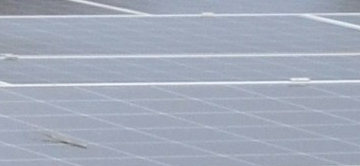To make the transition to low-carbon energy acceptable, European authorities are encouraging local initiatives, notably the formation of "energy communities". These bring together individuals, local authorities and small businesses to manage the energy resources and needs of their members. The rules governing the distribution of each community's earnings among its members are essential to its stability, but those governing the community's relations with its environment must not be overlooked.
Lenin, Armstrong and the Gallic village
In 1920, Lenin declared: "Communism is the government of the Soviets plus the electrification of the whole country". Eighty years later, the commission of American engineers chaired by Neil Armstrong confirmed the essential role of large-scale electrification networks in economic development: "Electrification is the greatest achievement of the twentieth century". In both cases, we're talking about supplying electricity to a maximum number of users from large production centers using hydraulic and thermal energy. For many poor countries, large-scale grid electrification remains a pious hope. In wealthy countries, it is being called into question because of the environmental impact of these networks. With the development of decentralized wind and photovoltaic technologies, the pooling of energy resources on a national or even continental scale no longer seems a priority. To make a success of the ecological transition, the authorities believe it is necessary to (re)empower energy "prosumers" in the face of the major industrial groups.
Interest groups
Regrouped under Title IX of the French Energy Code, renewable energy communities (articles L291-1 to L291-3) and citizen energy communities (articles L292-1 to L292-4) were created in French law by the Energy and Climate Law of November 8, 2019, in transposition of the European Clean Energy Package. The primary objective of an energy community is the provision of environmental, economic or social benefits to the shareholders, members or local territories in which the community operates.
The two types of community were not created for the same purpose. With a renewable energy (RE) community, the aim is to facilitate the local acceptability of RE projects and their financing by private capital. The members of an RE community must be located close to the projects being developed. This geographical limitation is not required in a citizen energy community, which has a broader scope of action. It is a legal entity that can take part in the production (including from renewable sources), distribution, supply, consumption, and storage of energy. It can also be involved in the aggregation of multiple electricity consumption loads or production, energy efficiency services or recharging for electric vehicles (article 2 of Directive (EU) 2019/944).
Rule for sharing profits between prosumers
For a community to form, enough households or firms must be willing to join it, which depends on how the benefits are shared between its members. The conditions that favor the formation of a community are, for example, convergence of interests (A and B live in the same building, on whose roof photovoltaic panels can be installed) or complementarity (when A is away, he sells the output of the panels installed on his house to B). Based on these data, which determine each person's contribution to the community, one can use cooperative game theory to identify the rules for sharing gains that buy the support of all potential contributors. One can show that commonly used sharing rules (per person, per installed capacity, per energy consumed, etc.) are not always acceptable to all the members the community needs. Acceptability depends on less intuitive rules, such as the Shapley value, which guarantees that each group of members will earn at least as much as if it was acting on its own, or minimum variance, which minimizes unequal treatment of members (see "On the viability of energy communities").
Energy communities and the network
The sharing of profits between community members is not the only issue. Other issues include the interest of non-members and the efficiency of RE communities in the energy mix. Even if RE communities turn out to be efficiency by generating and supplying power at lowest cost, it is not clear that non-members benefit from these gains. They might indeed be worse off. Since electricity is lost along the power lines, the main efficiency gain are the reduced line losses thanks to the proximity between the generation and consumption (see "The Energy Community and the Grid"). But the bulk of transmission costs are fixed: maintenance of lines, pylons and transformers. Those who can avoid grid costs (and related taxes) by creating an energy community leave non-members with a virtually unchanged overall transmission cost, and therefore a higher per capita bill. This gives non-members an additional reason to create their own community, triggering a snowball effect in which the ones left behind are the poorest households whose environment (geographical and/or social) is not conducive to the creation of any kind of energy community. (see "Unintended consequences: The snowball effect of energy communities").
*
* *
Combating climate change requires the combined use of many tools. Energy communities are undoubtedly one of these. But while it's true that they lower the cost of electricity, it's the responsibility of governments to ensure that all citizens benefit from them, including the poorest living in regions where renewable resources are scarce. This means sharing more widely the reductions in the variable cost of transmission, which requires new methods for calculating the network component of regulated tariffs.





